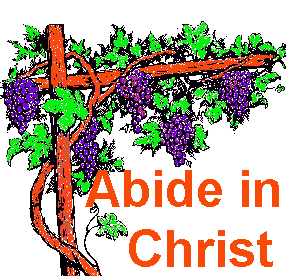The beginning of the
church at Thessalonica is found in Acts 16:6-10;
17:1-10. It was in Macedonia, the kingdom of
Alexander the Great that Paul landed. The city stood
on the Thermaic Gulf with its hot springs, and
famous harbor. Xerxes, the Persian, had his naval
base there when he invaded Europe. In Roman times it
was one of the world's great dockyards. In 315 B.C.
Cassander had rebuilt the city and renamed it
Thessalonica, the name of his wife, who was a
daughter of Philip of Macedon and a half-sister of
Alexander the Great. It was a free city. It had its
own popular assembly and its own magistrates. Its
population was around 200,000. Today Thessalonica is
called Salonika with 70,000 inhabitants.
The city straddled the
Via Egnatia, the Egnatian Road, running East and
West. Its main street was part of the very road
which linked Rome with the East. East and West
converged on Thessalonica; it was said to be "in the
lap of the Roman Empire." Trade poured into her from
East and West.
If Christianity settled
in Thessalonica it was bound to spread East along
the Egnatian Road until all Asia was conquered and
West until it stormed even the city of Rome.
When Paul arrived in
Thessalonica (Acts 17:1-10) he preached in the
Jewish synagogue for three Sabbaths (v. 2). He had
such success that the Jews raised so much trouble
that he had to be smuggled out of the city and sent
to Beroea (17:10-12). Paul left Timothy and Silas
behind in his escape. Paul had been in Thessalonica
only three weeks.
Paul was anxious to hear
what was going on in Thessalonica. Paul was in
Corinth when Timothy and Silas arrived from
Thessalonica (I Thess. 3:6; Acts 18:5). They had
brought abundant supplies from the Macedonian
churches to meet Paul's needs (II Cor. 11:9), as the
church in Philippi did once and again while Paul was
in Thessalonica (Phil. 4:15f).
"Timothy and Silas
brought news of serious trouble in the church in
Thessalonica. Some of the disciples there had
misunderstood Paul's preaching about the second
coming of Christ and had quit work and were making a
decided disturbance on the subject" (A. T.
Robertson).
Paul was against date
setting, even though he believed in the eminent
return of Christ.
AUTHOR:
The Apostle Paul (1:1; 2:18). It is typical Pauline
in structure, vocabulary, phraseology and character.
COMPANIONS OF PAUL:
Silas (Silvanus), was a Jew (Acts 16:20), leader of
the brethren in Jerusalem (15:22, 32, 40; I Pet.
5:12). Timothy was a younger man, a son of a Jewish
Christian mother and a Gentile father (Acts. 16:1).
DATE:
A.D. 50 to 51 from Corinth. This is probably the
first of Paul's writings that has come down to us,
and it may be the first New Testament book with the
possible exception of the Gospel of Mark or the
Epistle of James.
PURPOSE:
Paul writes both of the Thessalonian Epistles to
correct gross misapprehension and misrepresentation
of his preaching about last things (eschatology).
Silas and Timothy have returned from Thessalonica
with news of some problems that needed urgent
attention.
THEME:
The return of Jesus Christ. In I Thessalonians every
chapter ends with a reference to the second coming
(1:10; 2:19-20; 3:11-13; 4:13-18; 5:23, 24).
KEY VERSE:
5:23-24
CONCERNS:
1. Some of the believers
had stopped working and abandoned their
responsibilities to await the Second Coming with a
kind of hysterical expectancy. Paul corrects their
misconceptions (4:11).
2. They were worried
about those who had died and Christ had not
returned. Paul gives them courage and hope in their
bereavement (4:13-18).
3. There was a tendency
to despise authority (5:12-14).
4. These were converted
pagans who had come out of heathen vices, and it was
easy for them to fall back into immorality (4:3-8).
5. As all ways there was
a small group who slandered Paul and said the only
reason he preached was to get what he could out of
it (2:5, 9). Some accused him of being a dictator
(2:6, 7, 11).
6. There was some
division in the church (4:9; 5:13).
Second Thessalonians was
written within a few weeks of the first letter. The
second letter was written to clear up a
misconception about the Second Coming. There were
certain signs that would come before Christ's
appearance. The two letters would give balance to
the thinking about the Second Coming.
SOME KEY WORDS:
COMING––Parousia––means
"presence" or "arrival" of persons or things (I Cor.
16:17; II Cor. 7:7; Phil. 2:12; II Cor. 10:10). It
designated the royal visit of an emperor, king, a
governor, ruler or famous person. For such visits
special preparations had to be made. Taxes were
imposed to present the king with a golden crown. All
things must be made ready for the visit of the king.
Provinces were dated as a new era of time from the
parousia of the emperor. It was common to
strike new coins to commemorate the visit of a king.
The coming of the king brought a new set of values.
The word is used to describe the entrance of a new
conquering power and the visitation of a god. The
day is coming when the King of Kings will come and
reign with all of His gory and power. Preparations
must be made (I Thess. 3:13; 5:23; I Jn. 2:28). The
same Jesus who ascended to heaven will come again to
visit the earth in personal presence (Acts 1:11) at
the end of the age (Mat. 24:3) in power of glory
(Mat. 24:27) to destroy the antichrist and evil (II
Thess. 2:8), to raise the righteous dead (I Cor.
15:23), and to gather the redeemed (Mat. 24:3, 27,
37, 39; Jn. 5:28, 29; I Thess. 2:19; 3:13; 4:15;
5:23; II Thess. 2:1, 8, 9; Jas. 5:7, 8; II Pet.
1:16; 3:4, 12; I Jn. 2:28). Parousia is the time
when the Lord shall come out of heaven (I Thess.
4:15; 1:10). At that moment the dead who are
believers will rise first, and those who are
believers and are alive will be changed and be
caught up in the air by Jesus Christ.
DAY OF THE LORD
–– is an Old Testament expression meaning a day when
God will personally intervene and bring salvation
and judgment. In the New Testament it is related to
the Second Coming of Christ (I Cor. 1:8; 5:5; Phil.
1:6, 10; 2:16; II Thess. 2:2). This is not a
twenty-four day, but a period of extended time
during which the judgments of the Lord Jesus Christ
will take place upon the earth. For the believer it
is salvation, for the unbelieving world it is a day
of judgment and tribulation. The period begins with
the Tribulation and includes the events of the
second coming of Christ and the millennium. It will
come unexpectedly.
"Even so, come
Lord Jesus!"
Title: Introduction to 1
Thessalonians
Series:
Introduction to Bible Books



